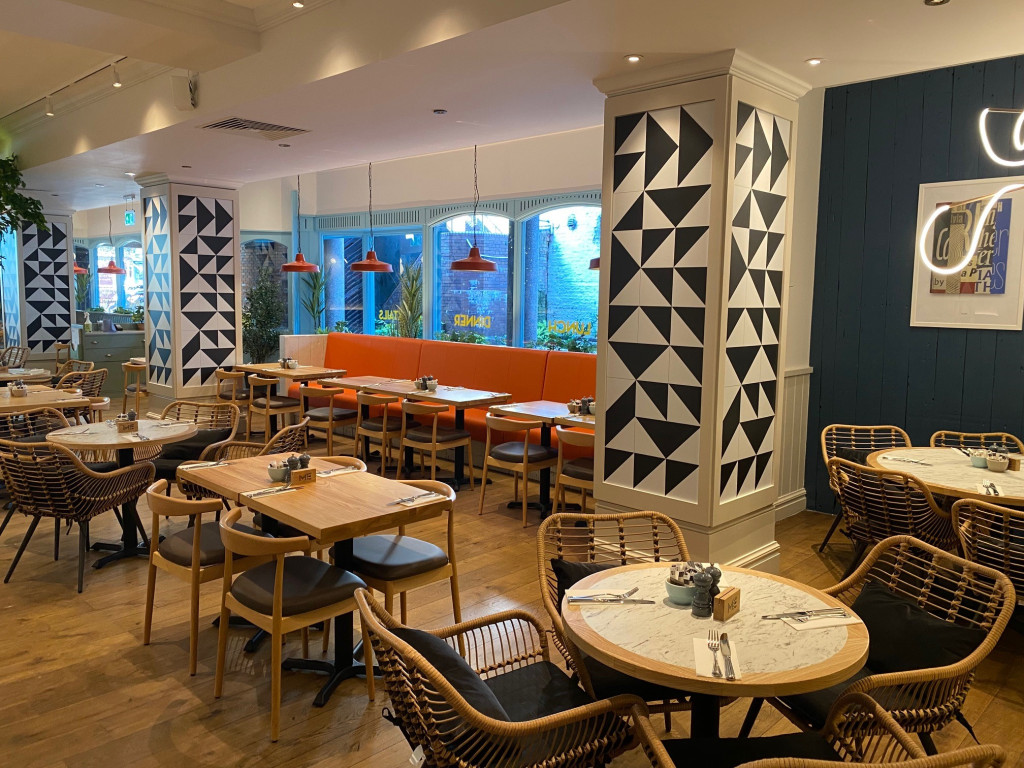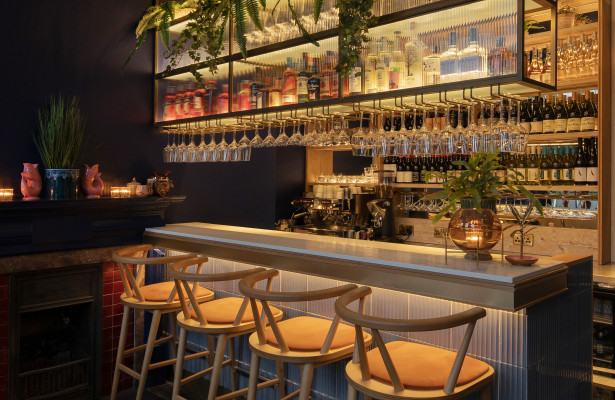How To Prevent Overspending On Restaurant Fit Out Costs

Launching a new restaurant is an exciting journey that requires vision, creativity, and financial discipline. While you may have many ideas for what your restaurant will look like, keeping your budget in check is crucial. Time and time again we’ve seen people get carried away with high-end finishes, elaborate marketing, or an extensive menu. The overspending on restaurant fit out costs can ruin a restaurant before it even opens its doors; Knowing how to prevent overspending on your fittings can make all the difference.
But don’t worry, careful planning and smart financial management, such as implementing value engineering and cost-benefit ratios, can help you to avoid these traps. Here are five common areas where startups often overspend and how you can avoid these pitfalls.
1. Invest wisely in kitchen equipment
While the latest kitchen gadgets are appealing, they can be financially crippling. Implementing value engineering and considering the ratio of cost to function is essential when purchasing kitchen equipment. Value engineering is the process of assessing the functions, components and materials in order to lower the costs, while allowing for a tolerable loss of performance or functionality; The value of an appliance can be defined as the ratio of function to cost. Essentially, if purchasing a cheaper alternative isn’t going to make a noticeable difference to the functionality of your restaurant, and it saves you money, then that is a clear win for you and your restaurant fit out costs.
If your budget is particularly tight, focus on value engineering by considering purchasing good quality second-hand equipment. Once again, if the functionality of a product isn’t overly affected, then purchasing a cheaper second-hand option is a logical choice. Another option for purchasing kitchen equipment could be to look at leasing options through reputable finance companies. This will allow you to spread out your restaurant fit out costs over time, easing the initial financial burden.
Prioritise essential appliances and consult experienced chefs to identify key points of functionality that you'll really need based on your menu, and establish where there is tolerable room for reduced functionality. Understanding what your restaurant needs to function can help you create a plan to prevent overspending on kitchen equipment, which is crucial for a financially healthy start.
2. Prioritise essential technology
We know it’s tempting to get the most advanced tech for your restaurant, but there are two essential pieces of technology you need: A point-of-sale system and something for bookkeeping. Beyond these, the rest are non-essential luxuries. If you're keeping the budget down, avoid splurging on iPads (or similar devices) for each waiter to take orders. While there are benefits to this technology, restaurants have managed for years with just pens and paper. This is another example of value engineering; If using the cheaper option of pens and paper over expensive technology doesn’t dramatically reduce the functionality of your restaurant, then it is an easy choice.
Also, an often overlooked tip is not to be afraid to shop around for the best internet deals. The initial quote you receive isn't always the best one available. Check renewal quotes too, as you can often find savings by switching providers. Sometimes, if you find a cheaper price elsewhere, your current provider might match it.
3. Get expert help with renovations and fit-outs
Many people believe that project managing their renovations, or doing the majority of the fit out work themselves, will save them money. The truth is, that this often leads to overspending due to inexperience and mistakes. Managing this process yourself can be a false economy, as the complexities involved are often underestimated. After all, trying to juggle everything alone might make you feel more like a circus performer than a restaurant owner.
Partnering with an experienced fit out company, which might seem like an unnecessary cost, can drastically help your project stay on budget. Their years of experience in budgeting, layout, and compliance ensure your vision comes to life without breaking the bank.
Restaurant fit out experts know all the tricks of the trade and can interpret your designer's brief to help save you money by recommending cheaper products that achieve the same high-end results. They will be knowledgeable about value engineering and considering the ratio of function to costs, so will be able to identify areas where cheaper alternatives can be put in place, without ultimately affecting the functionality of your restaurant.
Value engineering in construction may seem complicated, however an experienced fit out company will have complete knowledge of materials and processes, making it easier for them to identify areas that can be substituted with less expensive options. For example, this could be sourcing a similar material that has a cheaper import or delivery cost; While the appearance may differ slightly from the original material, the fit out company will know that it will perform in the same way and won’t reduce functionality, therefore is a logical way to reduce your restaurant fit out costs. Without expert help, opportunities such as this can be easily missed, and your costs remain high.
4. Leverage cost-efficient marketing
Whilst not a direct fit out cost, hiring a company to handle the launch of your restaurant can take a lot of pressure off you and allow you to focus your time on other aspects of your restaurant. However, this can strain your budget.
So, instead, harness the power of social media. Start by creating pages on platforms like Meta (Facebook & Instagram) and Twitter. Share your restaurant’s unique atmosphere and menu, and join local online communities to spread the word. Consider soft openings, posters, and leaflets to spread the word locally. Word of mouth remains invaluable, so focus on creating an environment that will earn glowing recommendations.
5. Streamline food and beverage costs
Finally, even if you’ve managed your restaurant fit out costs well, post launch, one of the biggest overspends start-up restaurants can make is buying food from one big supplier. Contrary to what you might think, this isn't always cost-effective and can quickly eat up your budget. Instead, build relationships with local farmers and businesses for better pricing and fresh, high-quality produce. Understanding how to prevent overspending on food can significantly impact your bottom line. Again, looking at cheaper alternatives that produce the same or similar end results is a key way to reduce overspending.
Other pitfalls lie in the actual food - either in offering too much on the menu or in preparing more food than is necessary. Refining your menu based on local produce not only prevents overstocking but also helps reduce waste. Keep your menu simple. Keep a record of what is chosen regularly and what is not, so you can be clear on knowing what it is worth spending your money on.
Ready to start your restaurant on the right foot?
So there you have it — five ways to prevent overspending when starting your restaurant. Focusing on the functionality of your restaurant by prioritising essential equipment, leveraging cost-efficient marketing, streamlining food and beverage costs, and seeking expert help, you can keep your budget in check and set your restaurant up for success.
Launching a restaurant is challenging, but with careful planning and smart financial management, you can avoid common mistakes. Remember, every penny saved in the early stages can contribute to your long-term success. If you want expert advice on restaurant fit-outs, to ensure your project stays on budget, get in touch with us today.
Managing Director
With a robust background in restaurant fit-outs, Mike Swift brings years of expertise to crafting unforgettable dining spaces. Known for blending functionality with style, Mike ensures every project not only meets regulatory standards but also captivates guests, with a commitment to delivering all projects on budget and on time.


